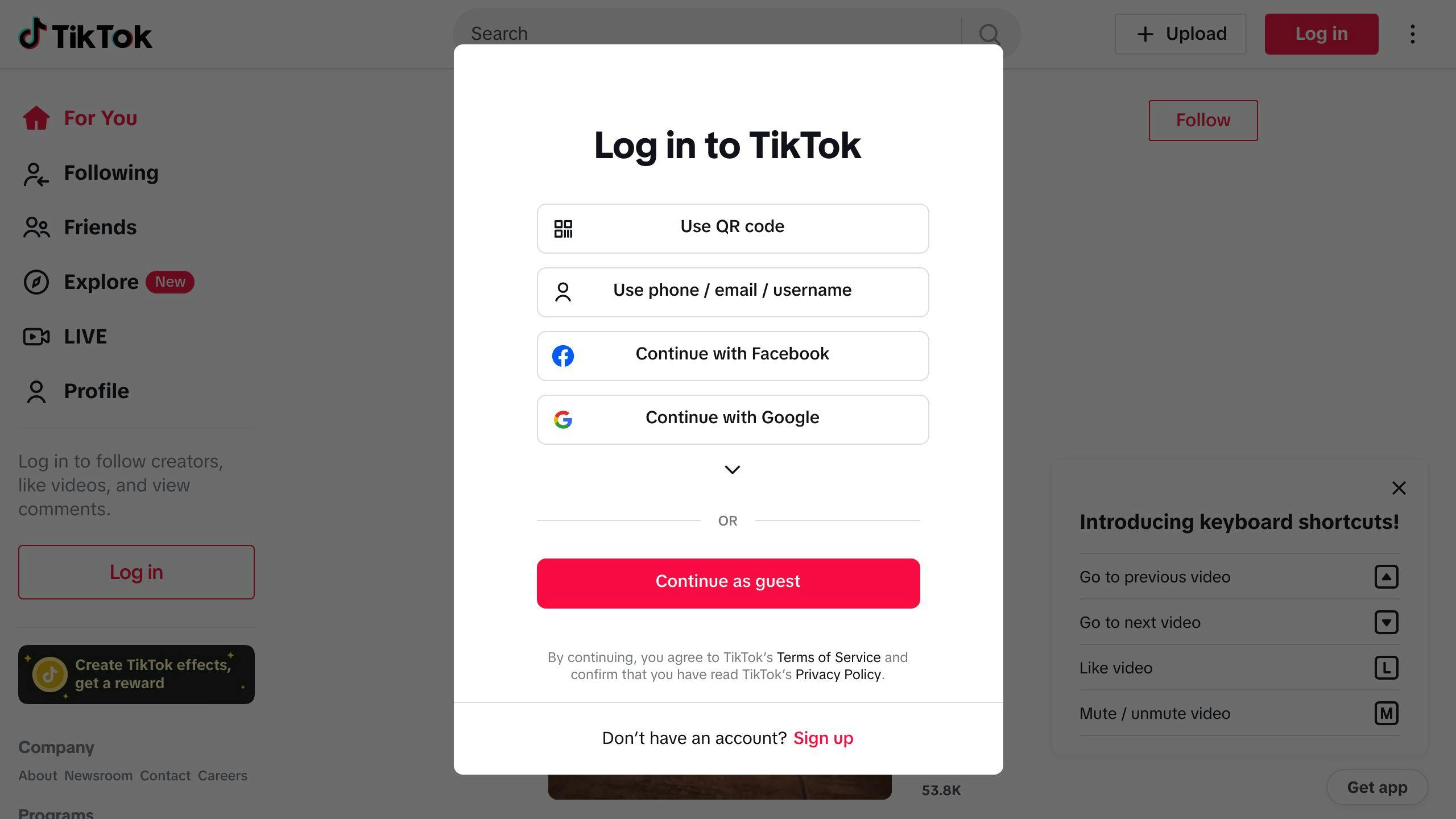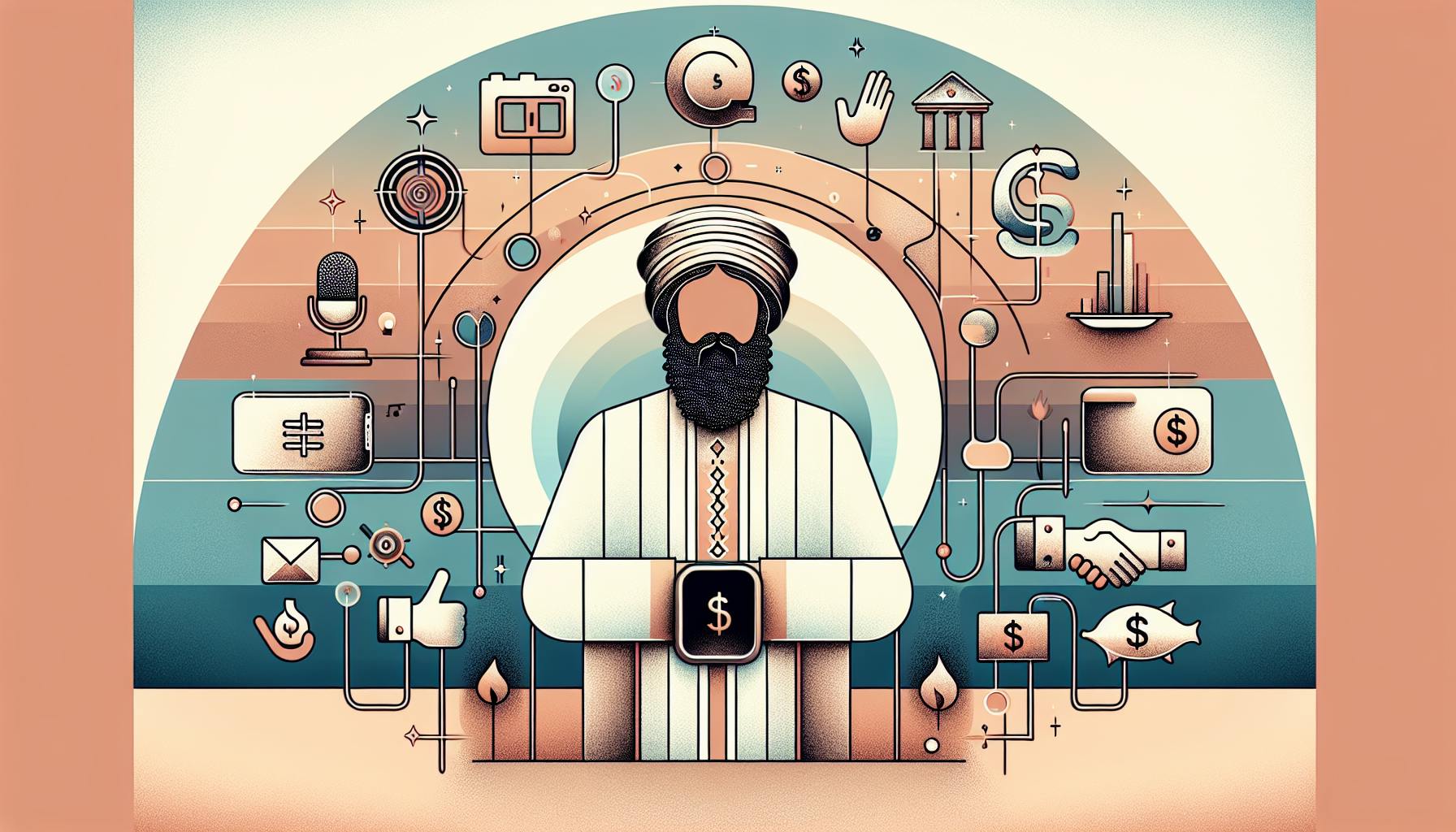The TikTok ban in the U.S. could severely impact creators who depend on the platform for income and audience engagement. Here’s what it means:
- Loss of Audience: TikTok's unique algorithm has been crucial for visibility. Creators may lose followers and struggle to replicate success elsewhere.
- Revenue Disruption: Income from TikTok’s Creator Fund, brand deals, and product sales could vanish overnight.
- Platform Dependency Risks: Relying solely on TikTok highlights the dangers of single-platform dependence.
Alternatives: Creators are shifting to platforms like YouTube Shorts, Instagram Reels, and TapeReal to diversify their content and income streams. Building a multi-platform presence and exploring new revenue sources are now essential strategies.
This shift could reshape the creator economy, emphasizing independence and sustainability as creators adapt to a world without TikTok.
With TikTok facing ban, young people flock to other apps

Effects of the TikTok Ban on US Creators
The TikTok ban has shaken the foundation of many US creators' businesses, disrupting how they connect with audiences and earn a living. Here's a closer look at the hurdles they face in this challenging scenario.
Loss of Audience Reach
For creators, losing TikTok means losing a direct line to their audience. Take Jessica Simon of Mississippi Candle Company, for example. She explains that:
"between 90% and 98%" of her company's sales come directly or indirectly from TikTok [3].
TikTok's "For You" page algorithm has been a game-changer for audience growth. Without it, creators may struggle to replicate the same level of engagement and visibility on other platforms.
Revenue Stream Challenges
The ban also hits creators where it hurts most - financially. Here are some of the key areas where they stand to lose income:
| Impact Area | Key Losses |
|---|---|
| Platform Earnings | Payments from the Creator Fund |
| Partnerships | Brand deals and sponsorships |
| Commerce | Sales of products or services |
| Engagement | Income from live streaming |
These losses highlight the need for creators to branch out and explore new platforms, as discussed in Strategies for Creators to Overcome Challenges.
Risks of Single Platform Dependency
Professor V.S. Subrahmanian from Northwestern University's Security & AI Lab points out an important takeaway: relying too heavily on one platform is risky [2]. The financial fallout from the TikTok ban serves as a stark reminder of this vulnerability, encouraging creators to adopt multi-platform strategies - a topic explored further in upcoming sections.
Alternative Platforms for Short-form Video
With a potential TikTok ban looming for US creators, several platforms provide opportunities to maintain audience connections and income streams.
YouTube Shorts: Revenue Opportunities Through Integration
YouTube Shorts is quickly becoming a go-to option for creators transitioning from TikTok. In fact, 25% of participating creators are already earning money through Shorts [1]. Its seamless connection with traditional YouTube channels makes it a strong choice for creators already using the platform, allowing them to tap into their existing subscriber base.
Key advantages include:
- Integration with standard YouTube channels for a unified content strategy
- Multiple revenue streams, including advertising, Super Chat, and memberships
- Flexibility to create both short and long-form videos
Instagram Reels: Built-In Audience and Branding Potential
Instagram Reels is another strong contender, especially for creators who already have a presence on Instagram. Its large user base and robust branded content features make it a natural fit for those looking to continue engaging their audience [1][4].
TapeReal: A Creator-Focused Alternative

TapeReal takes a different approach by addressing concerns about over-reliance on single platforms, as highlighted by Professor Subrahmanian. This platform focuses on empowering creators with tools like niche community feeds, premium memberships, direct content sales, and enhanced privacy options. It’s designed to help creators maintain control over their content and earnings while fostering highly engaged, topic-specific communities.
sbb-itb-bc761f5
Strategies for Creators to Overcome Challenges
With the potential TikTok ban looming, creators must rethink their strategies to keep their businesses running smoothly. The focus should be on two key areas: spreading their content across multiple platforms and diversifying how they earn money.
Building a Multi-Platform Presence
TikTok creator Jen White highlights the importance of not relying on a single platform:
"If it does go away, I need to increase my presence on other social media platforms like Instagram, Facebook, YouTube." [2]
To successfully expand across platforms, creators should:
- Tailor their content to fit the length and style of each platform.
- Use features like links or cross-promotion tools to guide their audience to other channels.
- Maintain consistent branding to ensure easy recognition across platforms.
- Develop engagement strategies specific to each platform’s audience and tools.
Exploring New Income Sources
For creators who rely heavily on TikTok for income, finding ways to earn money outside of the platform is essential. Building revenue streams that don’t depend on a single platform can provide stability.
Ways to Monetize Directly:
- Offer premium memberships through platforms like TapeReal.
- Sell digital products such as courses, ebooks, or templates.
- Use Patreon to provide exclusive content for paying subscribers.
- Create personal websites or other owned media to control both content and income.
Platforms like TapeReal make it easier to manage memberships and sell directly, giving creators more control over their earnings and their connection with their audience, no matter what happens with TikTok.
Future Impacts on the Creator Economy
With platforms like YouTube Shorts and TapeReal gaining traction, the creator economy is undergoing changes that could have lasting effects. The TikTok ban, in particular, is driving shifts in how creators approach platforms and content strategies, leading to a more decentralized and diversified landscape.
Growing Focus on Creator Independence
The possibility of a TikTok ban has highlighted the need for platforms that empower creators with more independence and control over their work. Emerging platforms are stepping up by offering tools that address key creator priorities, such as:
- Control Over Data: Allowing creators to manage their content and audience information directly.
- Monetization Options: Features that enable creators to earn through brand deals, standalone apps, or other revenue streams.
- Community-Centric Features: Tools designed to foster private, supportive communities, often with a focus on mental well-being and premium memberships.
These features aim to give creators more autonomy and security in a rapidly changing digital space.
Evolving Content Strategies
Creators are rethinking their approaches to content and business models to stay resilient amid platform uncertainties. Two major shifts are shaping these adaptations:
- Cross-Platform Creation: By distributing content across multiple platforms, creators can reduce the risk of losing their audience if one platform faces disruptions.
- Building Direct Connections: Developing email lists and other owned channels helps creators maintain control over their audience relationships. This strategy goes beyond multi-platform engagement, offering a safety net through direct audience access.
These changes reflect a broader push for creators to take charge of their digital presence and minimize reliance on any single platform.
Conclusion: Navigating the Future Without TikTok
The TikTok ban has pushed creators to rethink their digital strategies. Many are now exploring alternative platforms that offer ways to monetize content effectively. The key to thriving in this environment lies in diversifying across platforms and adopting strategies that don't rely too heavily on any single one.
Platforms like YouTube Shorts are expanding monetization options, while others, such as TapeReal, focus on giving creators more control and independence. This shift encourages creators to build business models that are less dependent on one platform, ensuring more stability in the long run.
These strategies tie back to the article's central idea of growing beyond a single platform. By embracing diversification and focusing on building independent brands, creators can stay ahead in an ever-changing digital world. This approach reflects the proactive methods discussed earlier, showing how creators can continue to grow and engage their audiences despite uncertainties.
Although the ban has caused disruption, it could ultimately benefit the creator economy by encouraging stronger, more sustainable practices. This shift highlights the importance of independence and flexibility in creating lasting success in the digital space.
FAQs
Where will TikTok creators go?
TikTok creators are already moving to other platforms, with some clear favorites emerging. Recent data shows that Meta's Instagram Reels and YouTube Shorts are expected to draw around 50% of TikTok's displaced ad dollars [4]. YouTube Shorts, in particular, has gained traction, with 25% of creators in its Partner Program earning revenue from short-form content [1].
Beyond these major players, creators are also trying out newer platforms:
| Platform | Key Features | Growth |
|---|---|---|
| RedNote | Focuses on short-form video content | 700,000+ new US users in just 48 hours [1] |
| TapeReal | Creator-first approach with exclusive content sales | Attracting premium content creators |
| Triller | Offers tools like SaveMyTikToks.com for migration | Supports transferring TikTok content [1] |
These platforms complement popular choices like YouTube Shorts and Instagram Reels, giving creators more options for shifting their content [1][5]. This reflects a larger trend in the creator economy, where independence from any single platform is becoming increasingly important.



